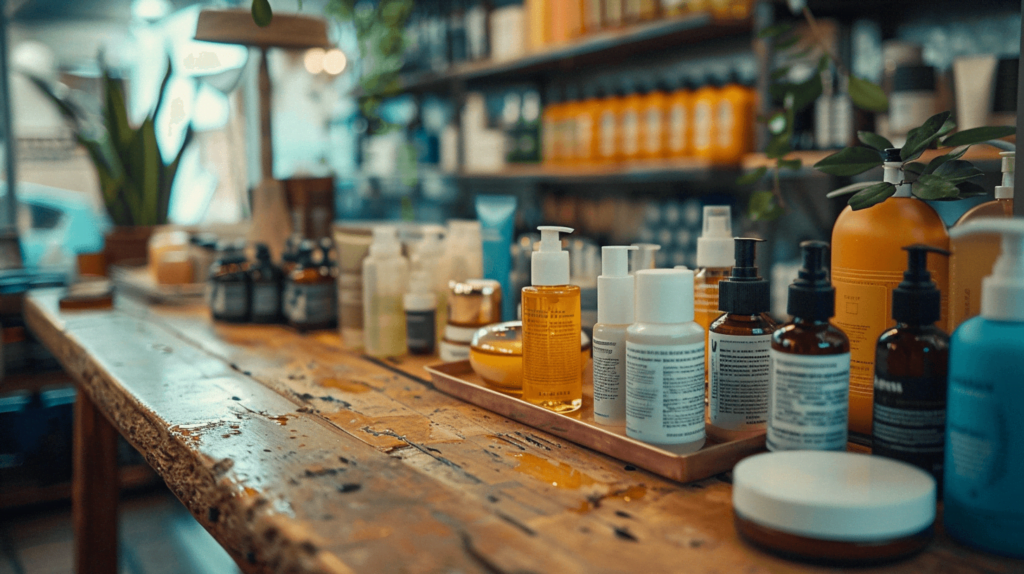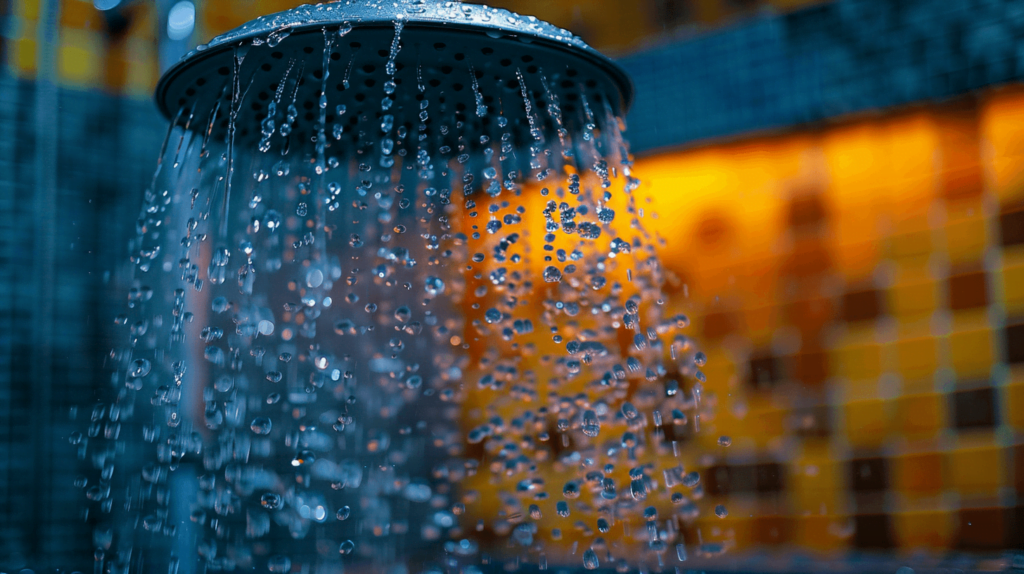Wax hair is an irritating and confusing problem for many people which causes a greasy, heavy feeling that makes the hair look dull and lifeless. This occurs when a sticky residue coats the hair making it feel like wax. Understanding what makes hair feel waxy is essential in addressing underlying causes and finding effective solutions to restore the health of the hair as well as its manageability.
Hair can be waxy for various reasons, hence due to factors such as product build-up, effects of hard water, overwashing, and accumulation of silicone. Product build-up occurs when styling products such as gels, mousses, and hairsprays leave behind residues that accumulate on the hair shaft and scalp over time.
Hard water contains minerals such as calcium and magnesium that combine with shampoos or conditioners to form deposits that stick to the hair leading to a wax-like sensation. Overwashing on its part may lead to the removal of natural oils from the scalp hence an increase in oil production causing a waxy feel.
Moreover, many haircare products contain silicon-based ingredients that coat the shafts trapping dirt or oils thus producing a waxy texture. The aforementioned insights are essential when resolving this problem.
1. Product Build-Up:

Product build-up has been widely discussed among hairstylists about waxy hair issues. When gels, mousses, pomades, or sprays are applied on the hair during styling they leave behind some residues which eventually pile up over time. These remainders not only cover individual strands but may also heap into flakes onto the scalp giving it an oily appearance.
One of these is silicone-based compounds included in various types of cosmetic products intended for improving the appearance of our locks. Although silicones serve as agents for creating smoothness in addition to shine on hairs, they block them by entrapping an enormous amount of other substances used in the styling process including dirt particles and oils such as sebum at their surfaces making the hair feel waxy. With buildup, it can become sticky and oily as well.
Besides, some heavy styling products like pomades or waxes are generally associated with build-up. These products usually contain oils and wax that standard washing cannot remove from our locks. Instead, they stay on hair clogging them while making them hard.
When we think about a solution for product-build-up, hairstylists often suggest using good clarifying shampoos or scalp scrubs occasionally for removing the residues or impurities from your hair and the surface of your scalp. These purging agents can be useful in eliminating such deposits as well as restoring the natural texture and shine of your mane.
Furthermore, experts also recommend reducing the usage of any styling commodities or seeking other lighter alternatives that minimize the chances of much product depositing on your head. Thus giving the hairs a clear rinse now and then will maintain hygiene and prevent a sticky feel by avoiding greasy buildup so that they remain vibrant lightweight fresh.
2. Hard Water Effects:

Hard water is frequently cited by hairstylists as one of the reasons for changes in hair texture thereby attributing such sensations to its impact. For example, hard water contains minerals such as calcium which interact with shampoo ingredients unpredictably.
When you put these hair care products on hard water, they may react and form insoluble substances. The substances could stick in the hair shaft leading to a buildup that becomes waxy. Consequently, over time, this buildup ends up making hair look lifeless, heavy, and hard to control.
Additionally, minerals present in hard water can also remove the natural oil content from hair causing dryness as well as increased production of oils by scalp. This excess oil can further worsen the waxy feeling alongside a lack of bounce or volume in this case.
To reduce the effects of hard water presence in the environment, for instance, stylists usually advise using products that are meant to fight mineral build such as clarifying shampoos or chelating treatments. These products help dissolve and eliminate deposits caused by minerals on the hair thus restoring its natural feel and shine.
When faced with severe cases of hard water areas where we live some hairdressers may suggest a water softener device for use at home or while washing their heads they should use filtered water only. This will prevent damage to their scalps and hairs due to wax-like deposit formation.
3. Overwashing

Another reason why it is said that frequent washing of your hair can lead to waxiness is because Hair needs sebum so when you wash off all sebum from your scalp then you are bound to have an oily wavy texture on your skin which will later turn into a waxy one once more due to excessive absorption.
Those who constantly clean their heads might end up being caught in a cycle where their heads become greasy shortly after washing necessitating another wash. Continuous elimination of natural oils may make it difficult for the skin around the head thus making it seem rather sticky in these occasions.
Moreover, frequent washing can also cause damage directly to the cuticle layer itself. Detergents found within shampoos tend to roughen a person’s hair which would then cause them to be dry, fragile, and with a tendency of breaking easily. Thus, the hair may feel rough and coated, contributing to the perception of waxy hair.
To stop this overwashing and its associated waxiness, people should create a habit of washing their heads that balances between cleanliness and retaining natural oil within the scalp. Washing it at least every other day or every third day may be enough for many people to keep their scalps healthy without removing too much sebum.
Also using gentle, sulfate-free shampoos can save someone from suffering from extreme drowsiness on his/her head. The best solution for such individuals is using dry shampoo between washes to eliminate excessive oils thereby reducing the need for regular head cleaning periods.
By striking a more even balance in hair washing routines, individuals will retain natural oils of the scalp while minimizing the sensation of waxiness thus promoting hair that is healthier than before and therefore easy to work with again.
4. Silicone Build-Up:

One other reason for waxy hair can be caused by silicone build-up by hairdressers. Silicones are very commonly used in hair care products like shampoos, conditioners, and styling serums due to their ability to leave the hair smooth, glossy, and manageable.
Initially, silicones work to control frizz and increase shine but they can also form a barrier on the hair shaft that binds dirt, oils, and other deposits. With time this aggregation of impurities together with silicones leads to a waxy feel of the hair.
Silicon build-up comes about when one keeps using silicone-containing products without properly clarifying their hair. Unlike water-soluble components that are easily washed out with water, silicones are more difficult to get rid of because they stay on the strands hence making them feel weighed down and greasy.
Moreover, not only does silicone build-up affect the texture of your hair but also its overall appearance. There may be a dullness or lifelessness in your air; this is caused by the layer of silicone residue preventing light from reflecting off its surface.
To combat the build-up of silicone as well as prevent wax-like sensations in our locks; it is recommended that individuals use clarifying products in their daily routine. Clarifying shampoos have special formulations that effectively remove all sorts of buildup including silicones from our head without stripping off essential moisture.
Also, individuals may wish to buy noncomedogenic or sulfate-free products for their hair to avoid building up silicones. They tend not to accumulate therefore softening our scalp plus mane compared with those having sulfates.
Weekly clarification coupled with avoiding silicon may help avoid such accumulation resulting in clean bouncy hair that lacks waxy residues simply through the proper choice of cleanser depending on its label information thereby maintaining healthy manageable tresses.
How to Get Rid of the Waxy Feeling In Your Hair:
Hairdressers have various ways through which they advise one can get rid of build-up in the hair and bring back its natural condition in case it is waxy:
- Clarifying Shampoos: The use of clarifying shampoos is one of the most effective methods to remove wax build-up from your hair. Clarifying shampoos are specifically created to thoroughly help with cleansing both the hair and the scalp, getting rid of tough residues like silicones, product build-ups, and hard water deposits. To maintain a clean scalp that lacks any waxy coating as well as prevent the same use clarifying shampoo at least once per week.
- Apple Cider Vinegar Rinse: Apple cider vinegar (ACV) is a natural clarifier that can be used for this purpose. After washing, dilute ACV with water and use it to rinse off any residue on your locks caused by waxing. The acidic nature of ACV ensures all buildup is broken down while normalizing the pH level of our hair. After using the shampoo, you should pour diluted ACV over your hair and leave it for a few minutes before doing the final rinse with water.
- Baking Soda Paste: Baking soda is also good at removing stickiness from hair. Create a mixture by mixing baking soda with water then apply it on wet air rubbing it gently into your scalp and tresses after which you will need to wash off using much water while the conditioner could follow eventually.
- Exfoliate your Scalp: To eliminate the waxy feeling created by dead skin cells, product buildup and excess oil exfoliating the scalp with a scalp scrub is necessary. Go for the ones with gentle ingredients that enable easy shedding of the scalp like sugar or salt among others. For this purpose massage them before washing them in circular movements over your head. It should be rinsed well to get rid of any remnants and thus expose fresh clean and cool heads.
- Avoid Heavy Products: Heavy products can cause hair residues making it necessary to avoid their usage to prevent a sticky buildup of wax on the scalp. Consequently, go for lighter formulations or those products that are labeled as “non-comedogenic” or “residue-free” since heavy products may lead to an increased chance of getting sticky buildup.
Incorporating these approaches into your hair care routine allows you to remove waxy buildup from your hair and scalp restoring its natural texture and healthiness. In addition, adherence to a balanced hair care program involving regular cleansing and limited use of products will prevent future instances of sticky buildup, thereby promoting healthy and manageable tresses.


